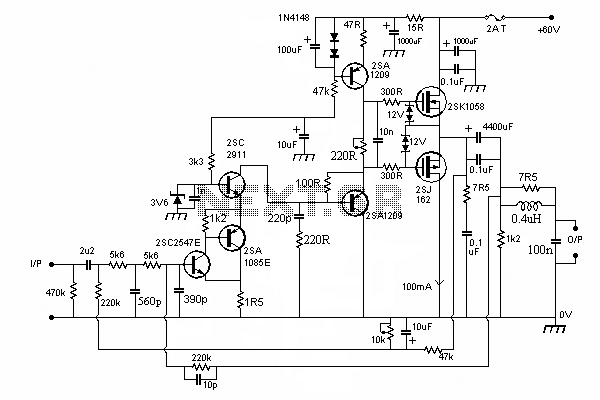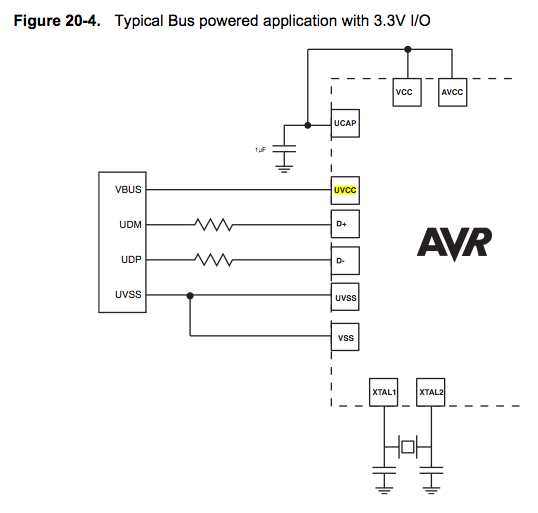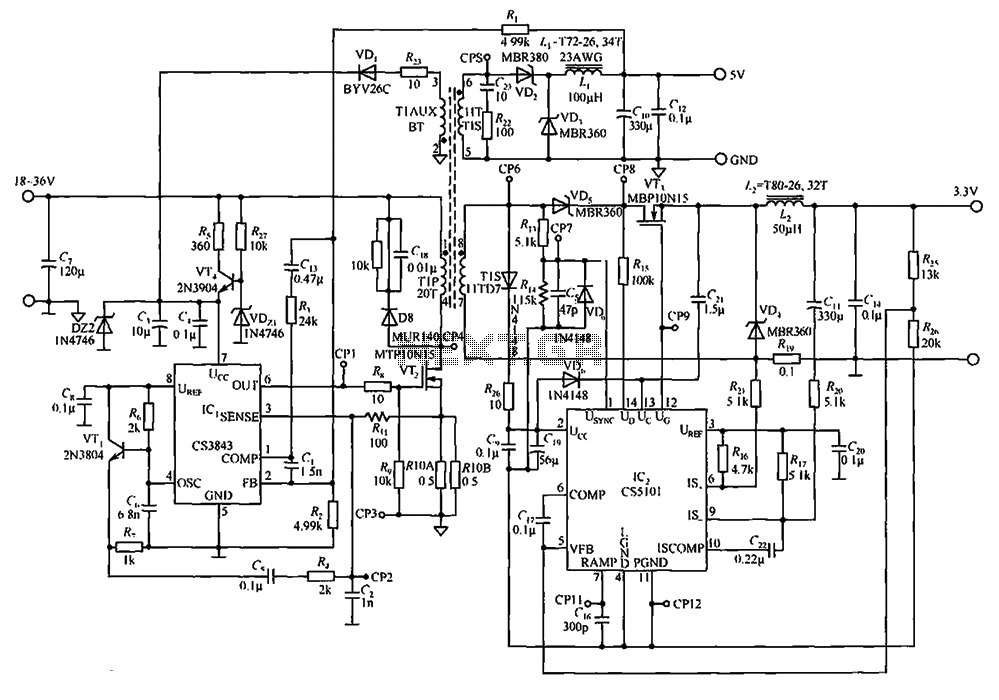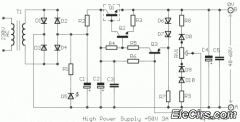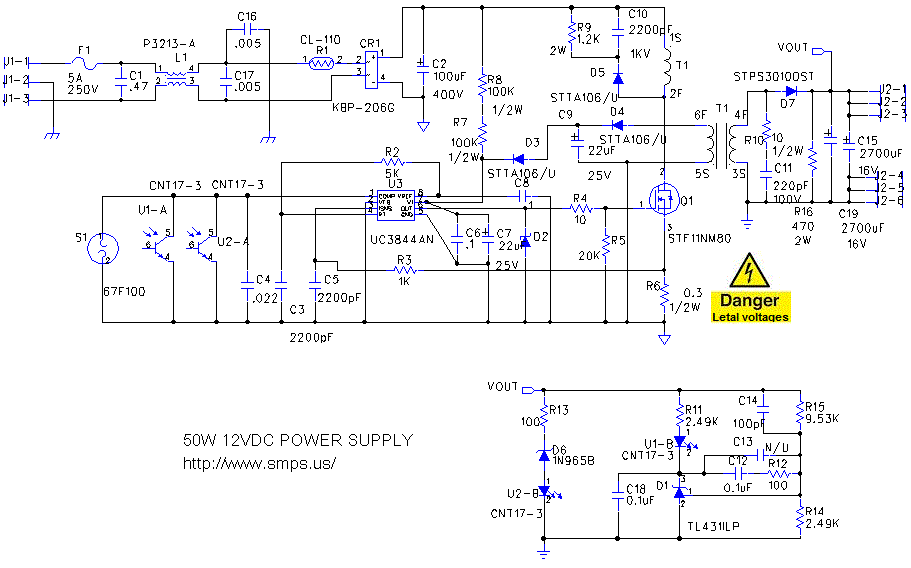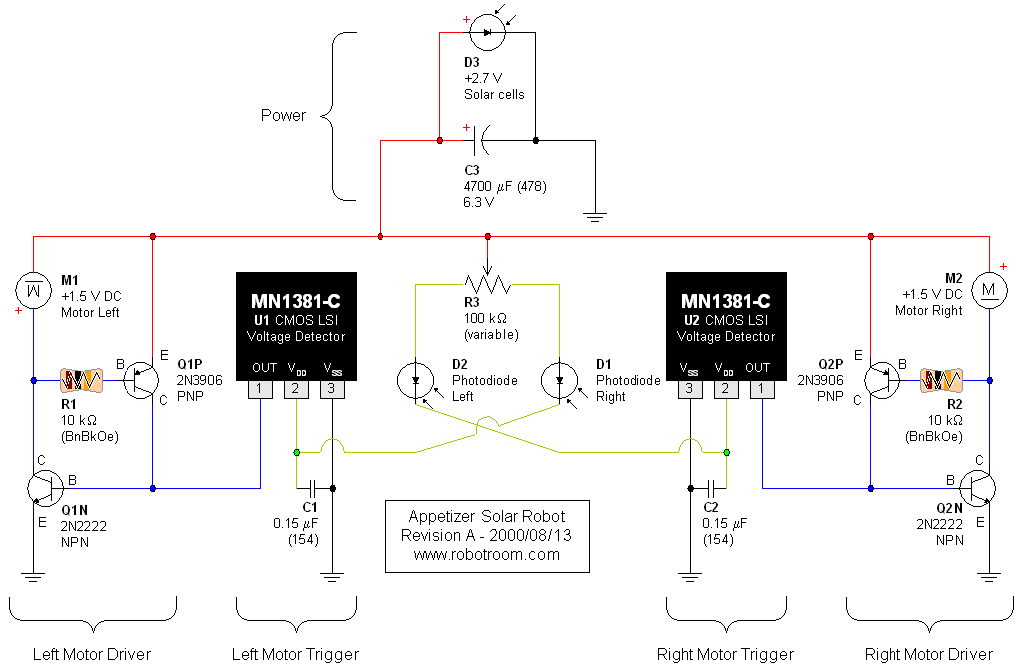
low power 5 v switching regulator

Low power 5V switching regulator power supply. Visit the corresponding page for an explanation of the related circuit diagram.
The low power 5V switching regulator is designed to efficiently convert a higher input voltage to a stable 5V output while minimizing power loss. Switching regulators are preferred in applications where power efficiency is critical, as they utilize a high-frequency switching element to regulate the output voltage, in contrast to linear regulators that dissipate excess voltage as heat.
The circuit typically consists of an input capacitor to filter the input voltage, a switching element (usually a MOSFET), an inductor to store energy, a diode for rectification, and an output capacitor to smooth the output voltage. The control circuitry often includes a feedback loop that monitors the output voltage and adjusts the duty cycle of the switching element to maintain a constant output voltage despite variations in load current or input voltage.
Key specifications for a low power 5V switching regulator include the input voltage range, output current capability, efficiency rating, and switching frequency. These parameters are critical for ensuring the regulator meets the requirements of the specific application, whether it be in battery-powered devices, portable electronics, or other low-power systems.
The circuit diagram associated with this regulator will typically illustrate the connections between these components, showing how the switching element is driven by a control signal, how the inductor and capacitor form a low-pass filter to produce a stable output voltage, and how feedback is implemented to regulate the output effectively. Proper layout and component selection are essential to minimize electromagnetic interference (EMI) and ensure stable operation under varying load conditions.Low Power 5V Switching Regulator power supply. Go to that page to read the explanation about above power supply related circuit diagram. 🔗 External reference
The low power 5V switching regulator is designed to efficiently convert a higher input voltage to a stable 5V output while minimizing power loss. Switching regulators are preferred in applications where power efficiency is critical, as they utilize a high-frequency switching element to regulate the output voltage, in contrast to linear regulators that dissipate excess voltage as heat.
The circuit typically consists of an input capacitor to filter the input voltage, a switching element (usually a MOSFET), an inductor to store energy, a diode for rectification, and an output capacitor to smooth the output voltage. The control circuitry often includes a feedback loop that monitors the output voltage and adjusts the duty cycle of the switching element to maintain a constant output voltage despite variations in load current or input voltage.
Key specifications for a low power 5V switching regulator include the input voltage range, output current capability, efficiency rating, and switching frequency. These parameters are critical for ensuring the regulator meets the requirements of the specific application, whether it be in battery-powered devices, portable electronics, or other low-power systems.
The circuit diagram associated with this regulator will typically illustrate the connections between these components, showing how the switching element is driven by a control signal, how the inductor and capacitor form a low-pass filter to produce a stable output voltage, and how feedback is implemented to regulate the output effectively. Proper layout and component selection are essential to minimize electromagnetic interference (EMI) and ensure stable operation under varying load conditions.Low Power 5V Switching Regulator power supply. Go to that page to read the explanation about above power supply related circuit diagram. 🔗 External reference
